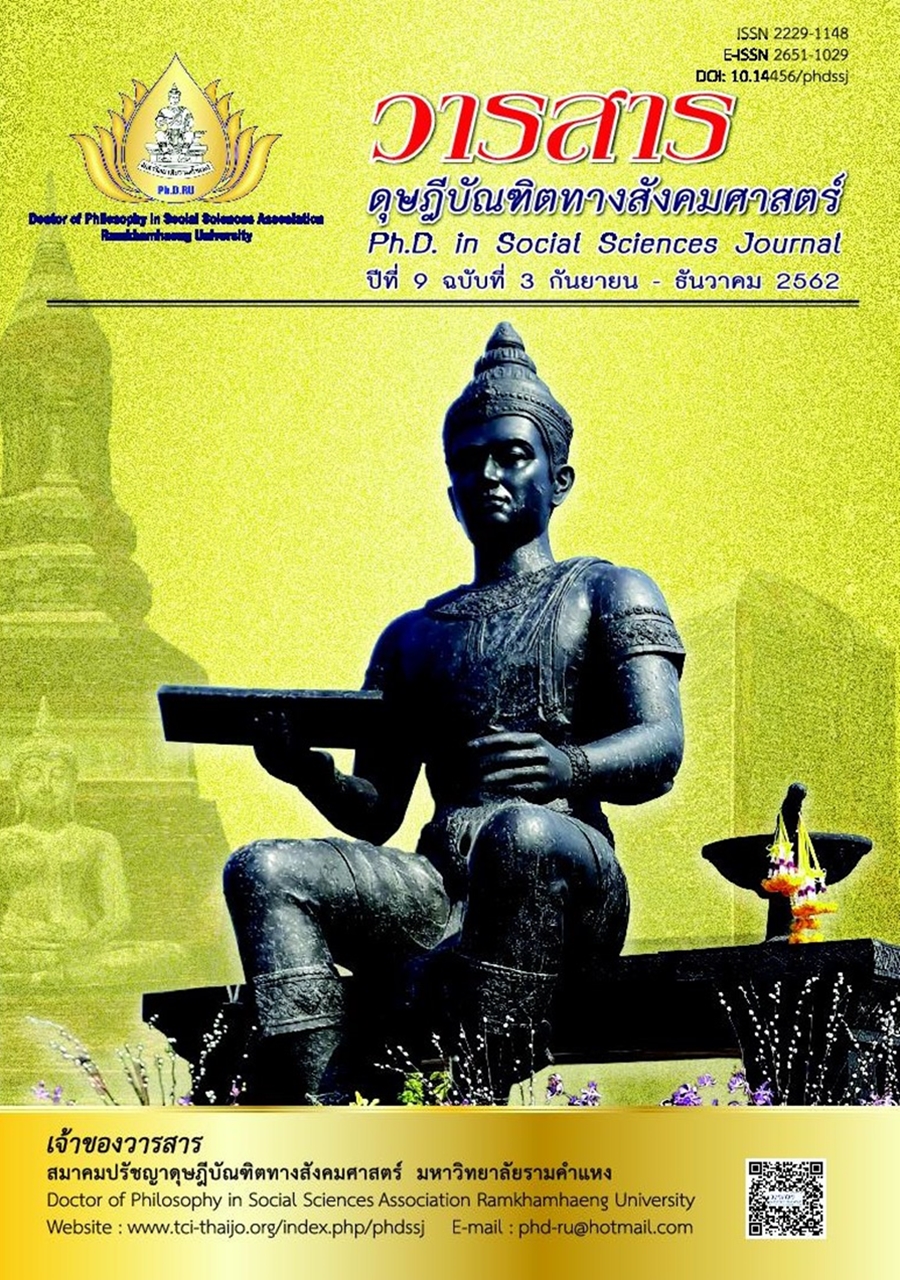Strong Community Committees Model in Development of the Slum in Bangkok
Main Article Content
Abstract
The research aimed to (1) study the slum environment in Bangkok (2) study the current and future roles of community committees in slum development (3) study support factors the strong role of community committees in developing slum communities and (4) To propose the Strong Community Committees Model in Development of the Slum in Bangkok.
This research was a qualitative research. Data were collected using in-depth interviews. By interviewing the personnel of Community Development and Social Welfare Committee Party, community Committees and people in slum community 30 people.
The research findings were:
1. The slum community 6 communities have been drug problem, but almost all community committees are committed to resolving the problem.
2. The original role of the community committee, there are weaknesses and some limitations. Community committees cannot effectively work to achieve their goals therefore; Bangkok should change the new role of the community committee.
3. the factors that led to the community committee strengthened the slum development include leadership, Knowledge of community committee, Structure of the Community Committee, Community Network, Operations Officer, Support from various agencies and the participation of the people in the community.
Article Details

This work is licensed under a Creative Commons Attribution-NonCommercial-NoDerivatives 4.0 International License.
Academic articles, research articles, and book reviews in the Ph.D. in Social Sciences Journal are author’s opinions, and not the publisher’s, and is not the responsibility of the Ph.D. in Social Sciences Journal Philosophy Association, Ramkhamhaeng University. (In the case that research is done on human, the researcher has to be trained in Ethics for Doing Research on Human Training and has to produce the evidence of the training).
References
Bhuahakosa, K. (2011). Complete learning community development guide. Bangkok: National Research Council of Thailand. [In Thai]
Bureekul, T. (2005). Participation: Concept and process. Bangkok: King Prajadhipok’s Institute. [In Thai]
Chompurat, C. (2006). Factors affecting occupational group’ strength in Chiangmai Province. Quality of Life and Law Journal, 2(2), 101-124. [In Thai]
Fuller, C. S. (2001). Antecedents to high performance breakthrough in permanent self-managed teams. Doctoral dissertation of organization development, Benedictine University, Chicago.
Kaewhawong, T. (2000). Strengthening community, community, and civil society. Khon Kaen: Klangnanawittaya Printing House. [In Thai]
Kaewpeng, D. (2013). Community. Songkla: Numsilp Advertise. [In Thai]
Murugan, S. (2014). Community organization and social action. Coimbatore, India: Social Work Department.
National Human Rights Commission of Thailand Office. (2015). Community rights and impacts of the Southern development project. Bangkok: Author. [In Thai]
Panyanuwat, A. (2005). Plural community education: Lessons from field research. Bangkok: Learning and Empowerment for Healthy Community Project. [In Thai]
Ruangkalapawongse, A., Ruangkalapawongse, S., Sripong, V., & Spiller, P. (2014). Development of the Strengths of the Natural-Agricultural Network of Wat Yannasangwararam Community Amphur Banglamung, Cholburi Province. SDU Research Journal (Humanities and Social Sciences), 10(2), 73-90. [In Thai]
Samakakarn, S., & Prateep, C. (2010). Urban and rural social development administration. Nonthaburi: Sukhothai Thammathirat Open University Press. [In Thai]
Sanders, I. T. (1958). Theories of community development. Photocopy of Rural sociology, 23(1), 1-12.
Sritong, N. (2008). Enhancing the capacity of leadership in community development. Bangkok: O. S. Printing House. [In Thai]
Techaatik, S. (2010). District leadership guide, strengthening community leaders, organization and networks. Bangkok: Thai Health Promotion Foundation. [In Thai]
Waraphak, M. (2002). Bureaucracy is died. Bangkok: Matichon. [In Thai]

